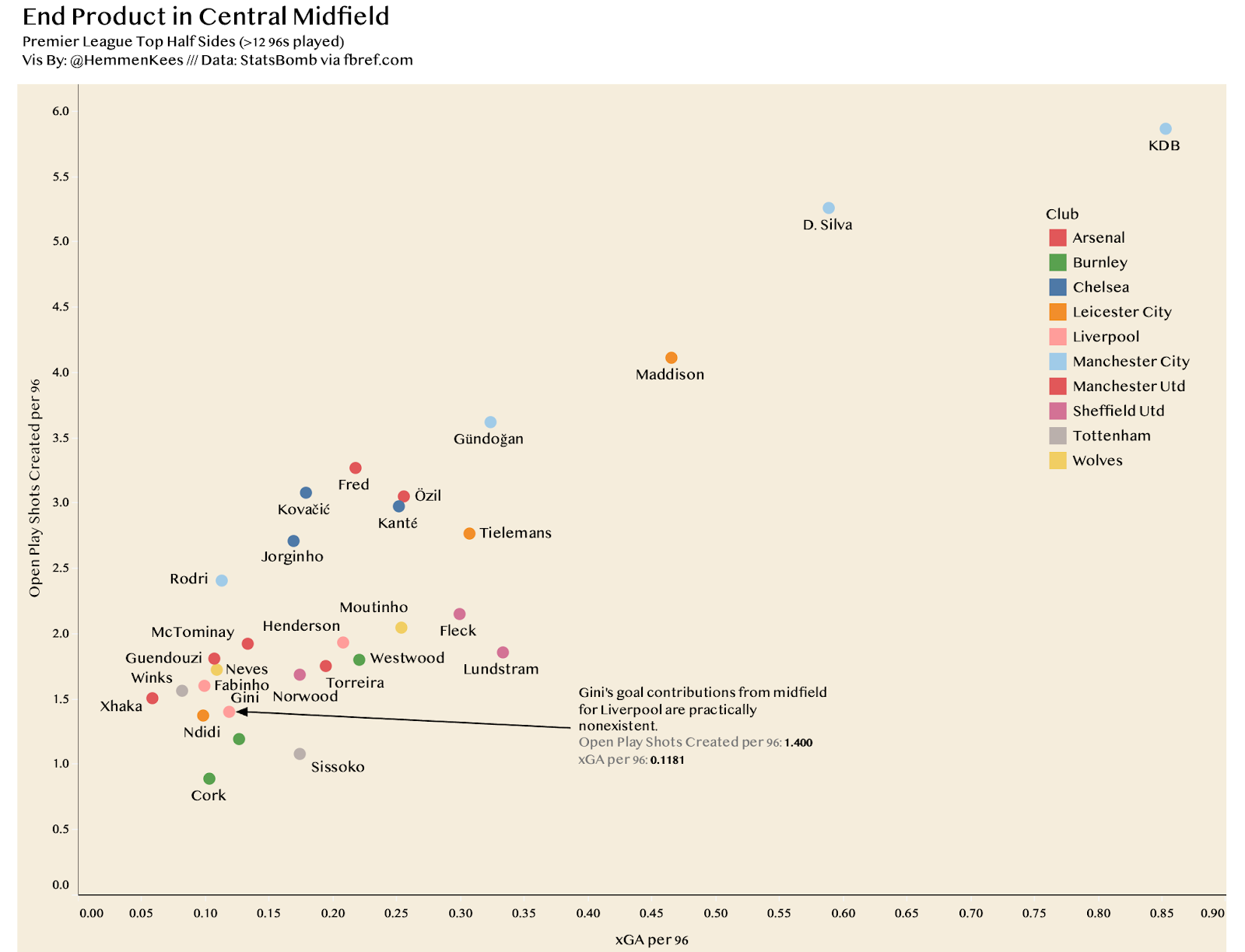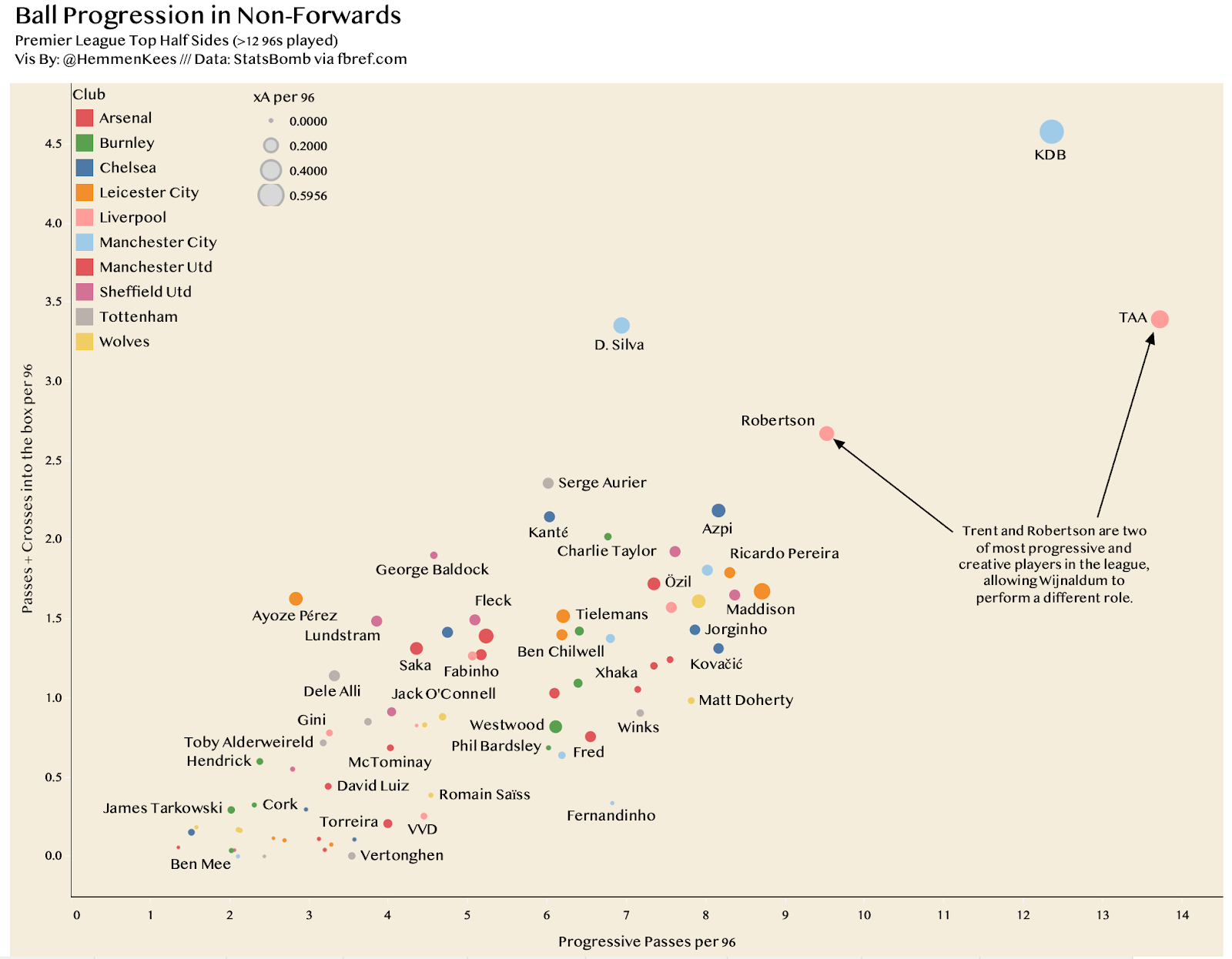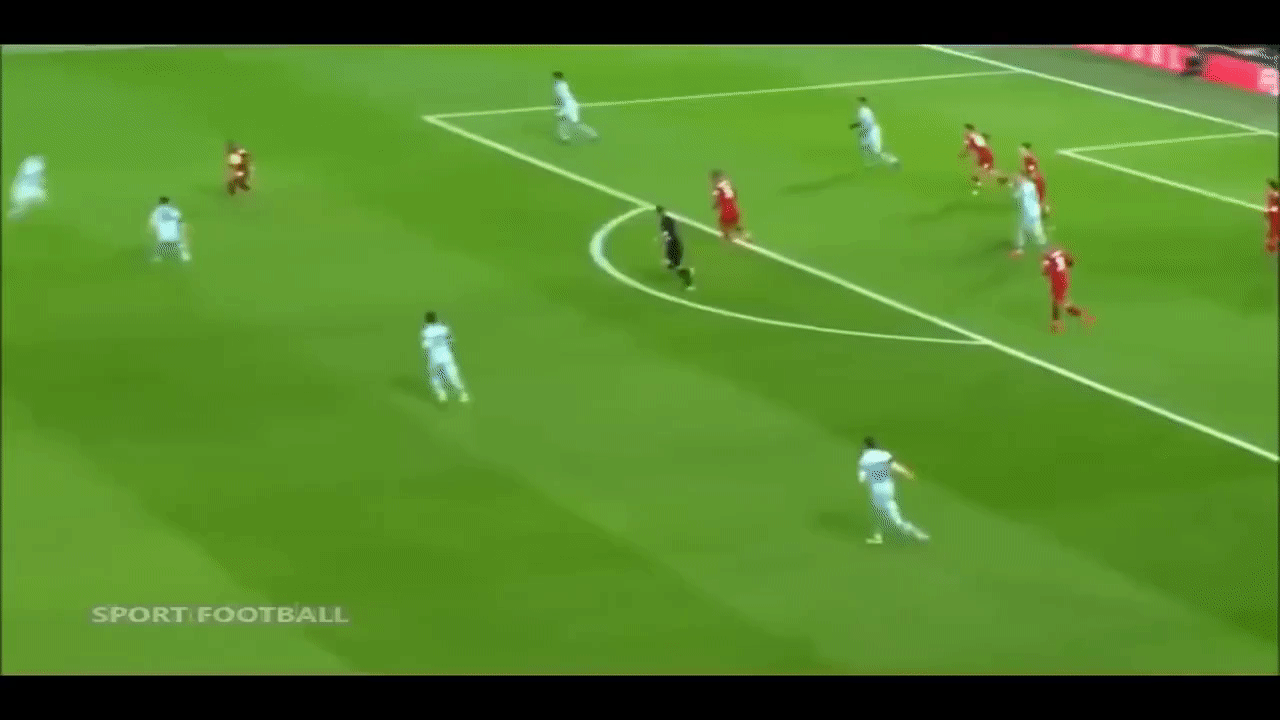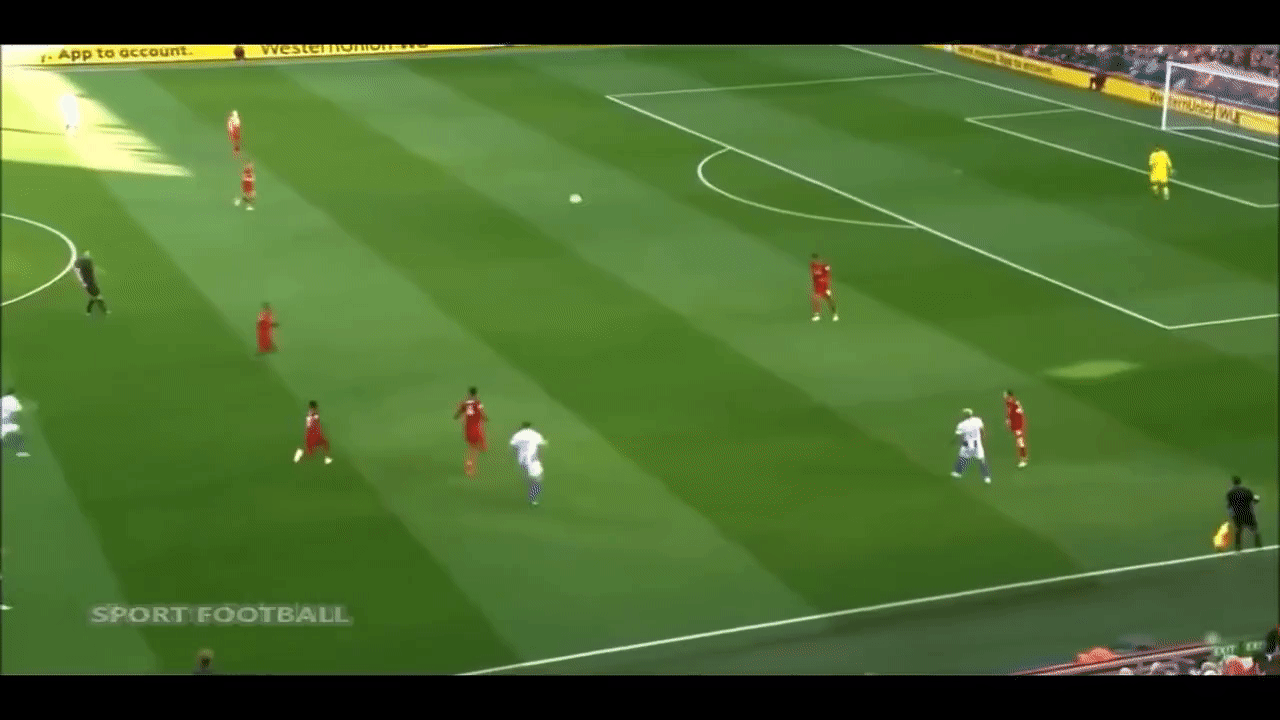What Does Gini Wijnaldum Actually Do? A Data Enquiry
By: Kees van Hemmen
Data in football has a variety of limitations. We cannot capture everything that we want to, and even the things we do capture are incomplete or misleading. What this ultimately means is that, despite all the advances in our understanding of the game that data has provided, we are still clinically undervaluing some players. As a result, almost anyone working with football data will tell you no player or team can be properly understood without some form of video analysis. Context is everything.
Unfortunately, a side effect of this is that any time a player looks underwhelming in the data, if their reputation is strong enough, someone will say, “Oh, but he contributes in this way, which is immeasurable and incredibly valuable.” It's a frustrating and often abused loophole in data driven argument, and perhaps no footballer benefits from this more than Liverpool midfielder Georginio Wijnaldum. Having begun his career as an attacking midfielder in the Netherlands, Gini was actually a fairly prolific goalscorer in his youth. He followed up 18 goals in his final season in Holland with an 11 goal season in England with Newcastle United, highlighted by a 4 goal game against Norwich City. Newcastle were relegated, however, and Wijnaldum was sold to Liverpool. His role didn’t change too drastically at first. In his first league campaign Gini managed 6 goals and 9 assists, a more than respectable tally. At this point in his career it would have been fair to guess that Wijnaldum was an out and out number 10, and would spend the rest of his years in the role. Liverpool manager Jurgen Klopp had other plans. Moved to a deeper position in midfield, Wijnaldum managed only two goals in fifty appearances the ensuing season. His performances were widely lauded, though, and over the course of the next two years he cemented himself in the starting XI of a Liverpool side that would go to two consecutive Champions League finals (winning one) and set a record for most points by a second place team in the Premier League.
Liverpool are a highly data driven club, with an American ownership group known for their support of the use of data in baseball. The club’s return to success had a variety of data driven elements, and as a result almost all of their players stand out in one way or another in the numbers. The front three of Mané, Salah, and Firmino are all amongst the league leaders in xG, xA, and various pressing numbers. Trent Alexander-Arnold and Andy Robertson lead fullbacks in almost every creative category, and center back Virgil van Dijk has league leading numbers in progressive and long distance passing for center backs. Defensive midfielder Fabinho is a leader in possession adjusted tackles and interceptions. Goalkeeper Alisson is second in the league in shot stopping based on PSxG+/- per shot faced. Conspicuously, Wijnaldum is one of the only exceptions. Despite this, he has a reputation as one of the better midfielders in the league. In the following piece I attempt to figure out what, if anything, makes Wijnaldum good.

Starting with the obvious, and something I’ve already touched upon, Wijnaldum is no longer the goalscorer that he once was. For Liverpool this campaign you’d expect him to be involved in a goal or assist only once every ten games based on his xGA. That number isn't exactly herculean, but it isn’t the end of the world either. A player can be an elite midfielder with minimal direct goal involvement, and, as noted earlier, it just is not his role anymore. It’s worth noting as well that Gini scored 7 goals in 5 games for the Dutch national team in European Championship qualifiers last year, indicating he’s perfectly capable in the final third. Not only that, but it also shows an underlying skill level and ability on the ball. That doesn’t just disappear when he plays for Liverpool, but rather his role likely demands it be used in a different capacity.
So Wijnaldum isn’t a goalscoring midfielder. Noted. Is he a defensive midfielder?

Nope. Or, if he is, not a very good one by traditional metrics. He doesn’t do a lot of ball winning, making about as many tackles + interceptions per 96 minutes played as Kevin de Bruyne and James Maddison, neither of whom are defensive midfielders by any stretch of the imagination. Somewhat surprisingly, he isn’t very active in the press either. Both of these can be written off due to his role. For Liverpool, Wijnaldum is neither an attacking nor a defensive midfielder. He isn’t a box to box midfielder either. Gini’s role is as a “between-the-boxes midfielder.” When Liverpool have the ball high up the pitch, Wijnaldum sits comparatively deep, acting as a sort of safety net in case the ball is cleared from the box towards an opposition forward. When Liverpool counter press (which they do almost constantly), Wijnaldum’s role is again to fill space in the center of the park in case the press is broken. Rather than looking to win the ball in this scenario, Gini generally tries instead to simply slow the attack and maintain defensive shape. This ultimately means he doesn’t sell out for the ball in almost any scenario, and his ball wins and pressures are extremely low. This is certainly an important role, but measuring his effectiveness in it is extremely difficult to do empirically. The best we can do is say Wijnaldum isn’t asked to win the ball, and thus shouldn’t be judged too harshly for not doing it.
[In the following examples he does record ball wins or recoveries, but they still showcase his general role, which is as a safety valve and collector in the press. Offball event film is extremely difficult to come by.]



This seems fair enough when it comes to Liverpool’s possession in the final third, and their defense in transition. But what about their transition from defense to attack? Is Wijnaldum progressing the ball up the pitch for Liverpool?

… no. Not really. Wijnaldum is extremely conservative with the ball, actually. He plays almost no role in this part of the game for Liverpool. This can again be written off based on his role. In Andy Robertson and Trent Alexander-Arnold, two of the best fullbacks in the world take the pitch at Anfield every week. Not only that, but the two are deployed in perhaps the most aggressive manner of any fullbacks in league history. Alexander-Arnold leads the league in progressive passes, and both players move the ball into the box more than any midfielder not playing for Guardiola’s Manchester City. They’re supremely talented ball progressors, and so they're given license to do so in great volume. What that means for Gini is that in possession he is extremely safe with the ball. He simply receives, moves, and feeds the fullbacks. He isn’t as good a progressor of the ball as TAA and Robertson, and so rather than wasting possession, he gives the ball to better progressors (who, incidentally, have more time on the ball because most clubs encourage ball movement to the fullbacks in defense). It suits the system, and it’s a role in which we finally see him stand out in the numbers:

In this graphic we see that, despite being pressured around league average when passing the ball, Wijnaldum concedes possession less than any other central midfielder in the league. This is where he provides the most value on the ball: his elite press resistance. Wijnaldum, with great frequency, will pick up the ball for Liverpool in the defensive third, and with a deft turn carry the side from defense to attack. A few good examples of this can be seen below:



By not conceding possession Wijnaldum puts himself in the select group of midfielders who win possession outright almost as much as they lose it. This is important. The value of turnovers – both creating them in defense and minimizing them in attack – has been studied in a variety of ways in football, most notably in Chris Anderson and David Sally’s The Numbers Game. There, Sally and Anderson write, “Pass completion percentages are nice, but avoiding turnovers is the most potent weapon of all.” And they have good backing for this. Within a study they conducted on European football, they found that “Teams that had less than half the turnovers in any given match won around 44% of the time, while those that gave the ball away more won only slightly less than 27% of the games.” (Anderson 157). Liverpool’s success over the last two years has been almost unparalleled, and it appears that a lot of it can be written up to Wijnaldum’s net turnover contributions.

On the x axis of this graph Net Possessions is calculated as Interceptions + Tackles Won - (Failed Passes + Dispossessions + Failed Dribbles). What this tells us is that our friend Gini is turning over the ball only 6 more times per game than he is winning it. It’s important to note that almost all players are negative on this metric, because it doesn’t include loose ball recoveries, so any value close to zero is excellent. Not only is the Dutchman maintaining turnover efficiency, but he is doing so while carrying the ball with great frequency. Only Chelsea star Mateo Kovačić is carrying the ball more in midfield, yet Wijnaldum is doing so while conceding relative possession less frequently. Though it may not make Wijnaldum appear to be a star on the pitch, or by conventional statistical metrics, his contribution in this capacity is undoubtedly vital to Liverpool’s success. Wijnaldum’s ability to safely transition Liverpool from defense to attack is what allows creators like Trent Alexander-Arnold to bombard the opposition with crosses for 90 minutes.
This is not to say that Wijnaldum is some hidden colossus in midfield. Explaining away a variety of statistical deficiencies based on role is fine, but asserting that he’s a world class player in spite of those deficiencies would be questionable at best. That said, Wijnaldum’s role is an important one, and he performs it in a highly successful side. That’s not nothing, and paired with his outstanding production for the Dutch national team it indicates he is perhaps a more noteworthy player than standard metrics otherwise show. A more indulgent and wasteful player than Wijnaldum (like, for instance, former RB Leipzig midfielder Naby Keïta) might compromise Liverpool’s defensive balance more than the supplementary dynamism would add. These are things worth keeping in mind when considering Wijnaldum’s standing amongst Premier League midfielders.
Sources:
Anderson, Chris, and David Sally. The Numbers Game: Why Everything You Know about Football Is
Wrong. Penguin Books, 2014.
Data Source for Visualizations:
https://fbref.com/
https://fbref.com/en/players/eb58eef0/Georginio-Wijnaldum
Data in football has a variety of limitations. We cannot capture everything that we want to, and even the things we do capture are incomplete or misleading. What this ultimately means is that, despite all the advances in our understanding of the game that data has provided, we are still clinically undervaluing some players. As a result, almost anyone working with football data will tell you no player or team can be properly understood without some form of video analysis. Context is everything.
Unfortunately, a side effect of this is that any time a player looks underwhelming in the data, if their reputation is strong enough, someone will say, “Oh, but he contributes in this way, which is immeasurable and incredibly valuable.” It's a frustrating and often abused loophole in data driven argument, and perhaps no footballer benefits from this more than Liverpool midfielder Georginio Wijnaldum. Having begun his career as an attacking midfielder in the Netherlands, Gini was actually a fairly prolific goalscorer in his youth. He followed up 18 goals in his final season in Holland with an 11 goal season in England with Newcastle United, highlighted by a 4 goal game against Norwich City. Newcastle were relegated, however, and Wijnaldum was sold to Liverpool. His role didn’t change too drastically at first. In his first league campaign Gini managed 6 goals and 9 assists, a more than respectable tally. At this point in his career it would have been fair to guess that Wijnaldum was an out and out number 10, and would spend the rest of his years in the role. Liverpool manager Jurgen Klopp had other plans. Moved to a deeper position in midfield, Wijnaldum managed only two goals in fifty appearances the ensuing season. His performances were widely lauded, though, and over the course of the next two years he cemented himself in the starting XI of a Liverpool side that would go to two consecutive Champions League finals (winning one) and set a record for most points by a second place team in the Premier League.
Liverpool are a highly data driven club, with an American ownership group known for their support of the use of data in baseball. The club’s return to success had a variety of data driven elements, and as a result almost all of their players stand out in one way or another in the numbers. The front three of Mané, Salah, and Firmino are all amongst the league leaders in xG, xA, and various pressing numbers. Trent Alexander-Arnold and Andy Robertson lead fullbacks in almost every creative category, and center back Virgil van Dijk has league leading numbers in progressive and long distance passing for center backs. Defensive midfielder Fabinho is a leader in possession adjusted tackles and interceptions. Goalkeeper Alisson is second in the league in shot stopping based on PSxG+/- per shot faced. Conspicuously, Wijnaldum is one of the only exceptions. Despite this, he has a reputation as one of the better midfielders in the league. In the following piece I attempt to figure out what, if anything, makes Wijnaldum good.
Starting with the obvious, and something I’ve already touched upon, Wijnaldum is no longer the goalscorer that he once was. For Liverpool this campaign you’d expect him to be involved in a goal or assist only once every ten games based on his xGA. That number isn't exactly herculean, but it isn’t the end of the world either. A player can be an elite midfielder with minimal direct goal involvement, and, as noted earlier, it just is not his role anymore. It’s worth noting as well that Gini scored 7 goals in 5 games for the Dutch national team in European Championship qualifiers last year, indicating he’s perfectly capable in the final third. Not only that, but it also shows an underlying skill level and ability on the ball. That doesn’t just disappear when he plays for Liverpool, but rather his role likely demands it be used in a different capacity.
So Wijnaldum isn’t a goalscoring midfielder. Noted. Is he a defensive midfielder?
Nope. Or, if he is, not a very good one by traditional metrics. He doesn’t do a lot of ball winning, making about as many tackles + interceptions per 96 minutes played as Kevin de Bruyne and James Maddison, neither of whom are defensive midfielders by any stretch of the imagination. Somewhat surprisingly, he isn’t very active in the press either. Both of these can be written off due to his role. For Liverpool, Wijnaldum is neither an attacking nor a defensive midfielder. He isn’t a box to box midfielder either. Gini’s role is as a “between-the-boxes midfielder.” When Liverpool have the ball high up the pitch, Wijnaldum sits comparatively deep, acting as a sort of safety net in case the ball is cleared from the box towards an opposition forward. When Liverpool counter press (which they do almost constantly), Wijnaldum’s role is again to fill space in the center of the park in case the press is broken. Rather than looking to win the ball in this scenario, Gini generally tries instead to simply slow the attack and maintain defensive shape. This ultimately means he doesn’t sell out for the ball in almost any scenario, and his ball wins and pressures are extremely low. This is certainly an important role, but measuring his effectiveness in it is extremely difficult to do empirically. The best we can do is say Wijnaldum isn’t asked to win the ball, and thus shouldn’t be judged too harshly for not doing it.
[In the following examples he does record ball wins or recoveries, but they still showcase his general role, which is as a safety valve and collector in the press. Offball event film is extremely difficult to come by.]
This seems fair enough when it comes to Liverpool’s possession in the final third, and their defense in transition. But what about their transition from defense to attack? Is Wijnaldum progressing the ball up the pitch for Liverpool?
… no. Not really. Wijnaldum is extremely conservative with the ball, actually. He plays almost no role in this part of the game for Liverpool. This can again be written off based on his role. In Andy Robertson and Trent Alexander-Arnold, two of the best fullbacks in the world take the pitch at Anfield every week. Not only that, but the two are deployed in perhaps the most aggressive manner of any fullbacks in league history. Alexander-Arnold leads the league in progressive passes, and both players move the ball into the box more than any midfielder not playing for Guardiola’s Manchester City. They’re supremely talented ball progressors, and so they're given license to do so in great volume. What that means for Gini is that in possession he is extremely safe with the ball. He simply receives, moves, and feeds the fullbacks. He isn’t as good a progressor of the ball as TAA and Robertson, and so rather than wasting possession, he gives the ball to better progressors (who, incidentally, have more time on the ball because most clubs encourage ball movement to the fullbacks in defense). It suits the system, and it’s a role in which we finally see him stand out in the numbers:
In this graphic we see that, despite being pressured around league average when passing the ball, Wijnaldum concedes possession less than any other central midfielder in the league. This is where he provides the most value on the ball: his elite press resistance. Wijnaldum, with great frequency, will pick up the ball for Liverpool in the defensive third, and with a deft turn carry the side from defense to attack. A few good examples of this can be seen below:
By not conceding possession Wijnaldum puts himself in the select group of midfielders who win possession outright almost as much as they lose it. This is important. The value of turnovers – both creating them in defense and minimizing them in attack – has been studied in a variety of ways in football, most notably in Chris Anderson and David Sally’s The Numbers Game. There, Sally and Anderson write, “Pass completion percentages are nice, but avoiding turnovers is the most potent weapon of all.” And they have good backing for this. Within a study they conducted on European football, they found that “Teams that had less than half the turnovers in any given match won around 44% of the time, while those that gave the ball away more won only slightly less than 27% of the games.” (Anderson 157). Liverpool’s success over the last two years has been almost unparalleled, and it appears that a lot of it can be written up to Wijnaldum’s net turnover contributions.
On the x axis of this graph Net Possessions is calculated as Interceptions + Tackles Won - (Failed Passes + Dispossessions + Failed Dribbles). What this tells us is that our friend Gini is turning over the ball only 6 more times per game than he is winning it. It’s important to note that almost all players are negative on this metric, because it doesn’t include loose ball recoveries, so any value close to zero is excellent. Not only is the Dutchman maintaining turnover efficiency, but he is doing so while carrying the ball with great frequency. Only Chelsea star Mateo Kovačić is carrying the ball more in midfield, yet Wijnaldum is doing so while conceding relative possession less frequently. Though it may not make Wijnaldum appear to be a star on the pitch, or by conventional statistical metrics, his contribution in this capacity is undoubtedly vital to Liverpool’s success. Wijnaldum’s ability to safely transition Liverpool from defense to attack is what allows creators like Trent Alexander-Arnold to bombard the opposition with crosses for 90 minutes.
This is not to say that Wijnaldum is some hidden colossus in midfield. Explaining away a variety of statistical deficiencies based on role is fine, but asserting that he’s a world class player in spite of those deficiencies would be questionable at best. That said, Wijnaldum’s role is an important one, and he performs it in a highly successful side. That’s not nothing, and paired with his outstanding production for the Dutch national team it indicates he is perhaps a more noteworthy player than standard metrics otherwise show. A more indulgent and wasteful player than Wijnaldum (like, for instance, former RB Leipzig midfielder Naby Keïta) might compromise Liverpool’s defensive balance more than the supplementary dynamism would add. These are things worth keeping in mind when considering Wijnaldum’s standing amongst Premier League midfielders.
Sources:
Anderson, Chris, and David Sally. The Numbers Game: Why Everything You Know about Football Is
Wrong. Penguin Books, 2014.
Data Source for Visualizations:
https://fbref.com/
https://fbref.com/en/players/eb58eef0/Georginio-Wijnaldum



Very informative!
ReplyDeleteThanks for sharing great informational content.
ReplyDeleteiBuumerang
FMovies
Thanks for this post. Digibrity
ReplyDelete